Updates on volcanic activity (Smithsonian)
The Smithsonian/USGS Weekly Volcanic Activity Report provides information about global volcanism on a weekly basis. Latest Reykjanes report has been published on 17 Jan 2024 10:08.
IMO reported that a seismic swarm began near the older Sundhn?kag?gar crater row on the Reykjanes peninsula around 0230 on 14 January. Both GPS data and borehole pressure readings indicated that magma was moving. IMO raised the Aviation Color Code to Orange (the third level on a four-color scale), noting an increased likelihood of an eruption. The locations of the earthquakes shifted towards the town of Grindav?k where, according to Almannavarnadeild r?kisl?greglustj?ra (National Commissioner of the Icelandic Police and Department of Civil Protection and Emergency Management), evacuations started around 0300.
A fissure eruption began at around 0757 just N of Grindav?k, SE of Hagafell, and was visible on webcams. The Aviation Color Code was raised to Red, but then lowered back to Orange at 0826 because no ash was detected in radar data. A Coast Guard helicopter was dispatched to investigate the eruption site. A NE-SW-trending fissure was visible and notably lengthened within about 10 minutes according to a news article. The fissure grew to about 900 m long and crossed through the eastern part of a curving E-W-oriented earthen berm built to deflect lava flows away from the town. Lava fountaining occurred along the length of the fissure. Lava spread perpendicular from the fissure and to the SW, covering the E half of the berm, though the longest flow traveled WSW along the berm and away from the town. Construction workers managed to reach their heavy equipment that was being used to build the berm and drive them to safety away from the lava flows. Lava covered part of Grindav?kurvegur road and overtopped a small area of the berm at the road, flowing S.
A shorter second fissure that was about 100 m long opened at 1210 on 14 January to the SW of the first and S of the berm, about 200 m from the Efrah?pi neighborhood in Grindav?k. Lava flows traveled S, entering the town and setting at least three houses on fire. This fissure was no longer active by 1640 on 15 January and the effusion rate at the larger, main fissure had decreased. Seismicity and the rate of deformation had also decreased, though deformation near the S part of the magmatic dike near Grindav?k continued to be detected. Displacement within the town was as high as 1.4 m during 14-15 January; ground cracks had developed, and existing ones had expanded. Thermal images from a 15 January drone flight indicated that previously mapped fissures SW of Grindav?k had significantly enlarged. Lava effusion at the longer fissure was concentrated at two of four main vents. Lava effusion at the main fissure ceased around 0100 on 16 January. Seismicity continued to decrease, though event locations indicated that magma movement continued. Most of the seismic activity was concentrated near Hagafell, close to the main fissure. IMO lowered the Aviation Color Code to Yellow at 2105, noting the ongoing decline of seismicity.
A man working on filling cracks in Grindav?k fell into one of the cracks on 10 January and was unable to be located. Hundreds of rescue workers searched for the man but due to unsafe conditions and landslides occurring inside the crack the search was stopped on 12 January.
Sources: Almannavarnadeild r?kisl?greglustj?ra (National Commissioner of the Icelandic Police and Department of Civil Protection and Emergency Management),Icelandic Meteorological Office (IMO),Icelandic National Broadcasting Service (RUV),Independent
See the detail here

